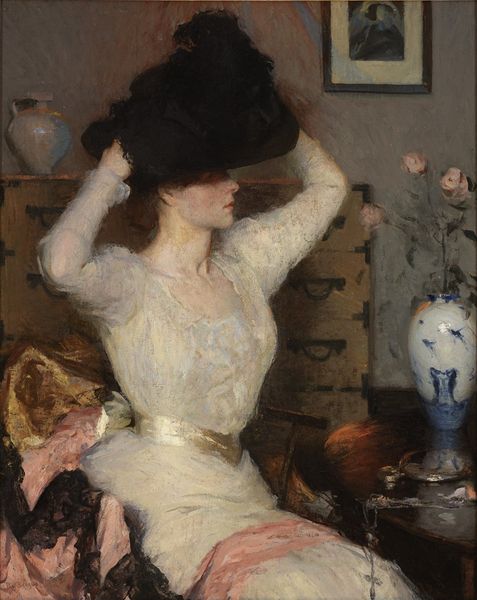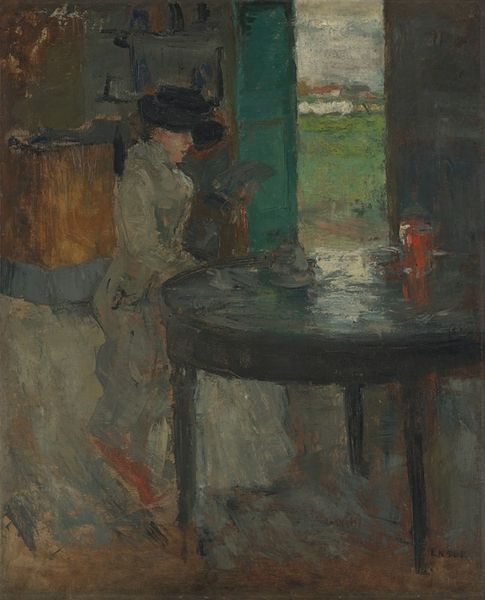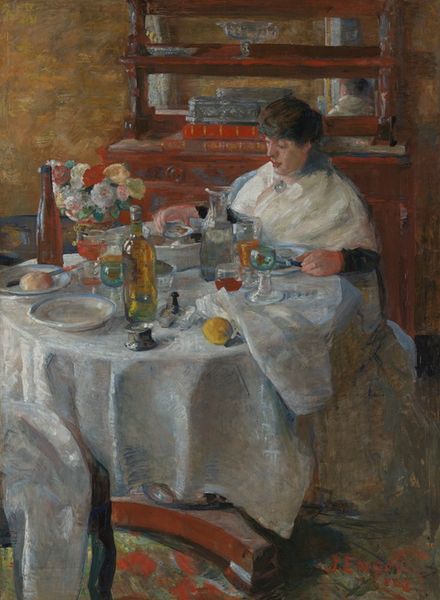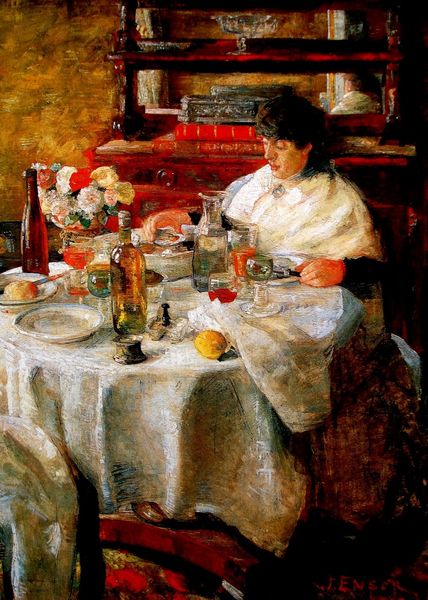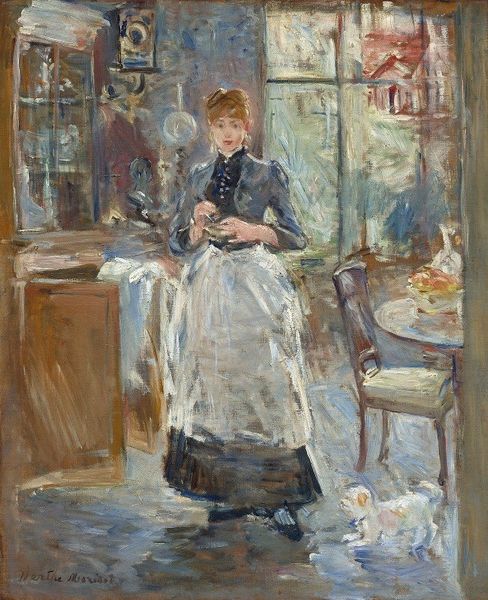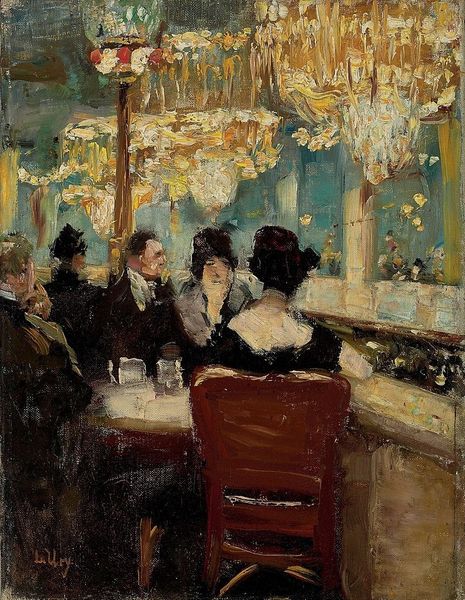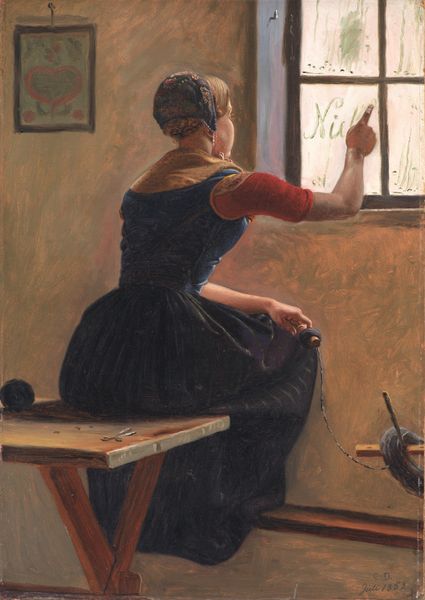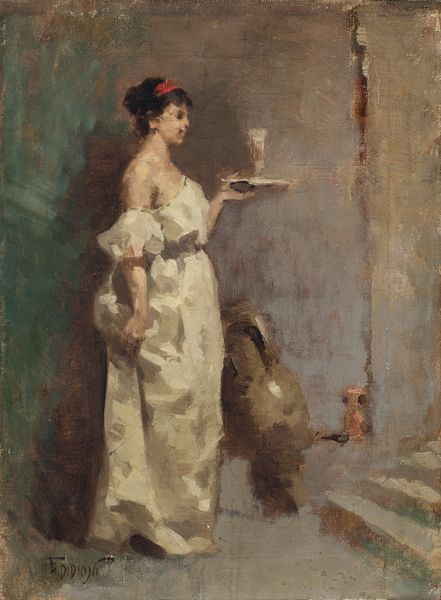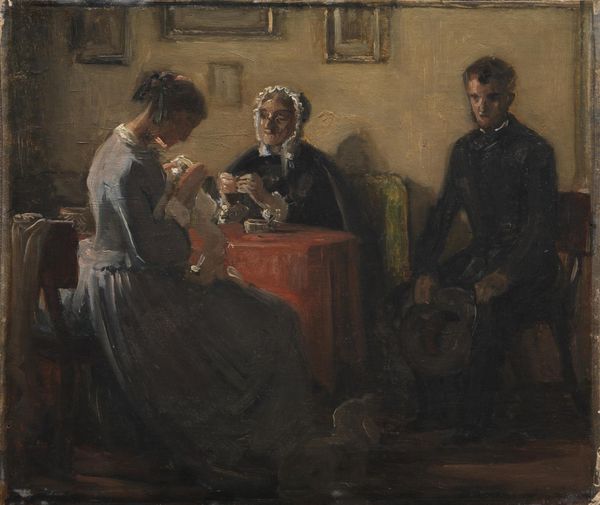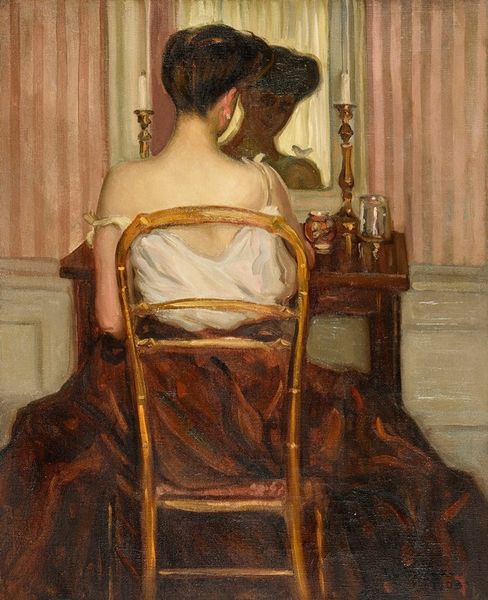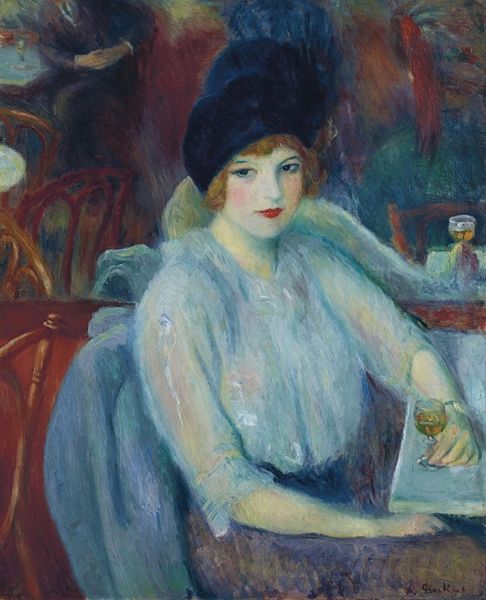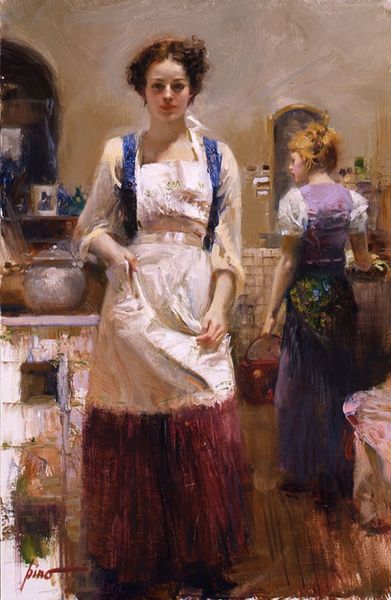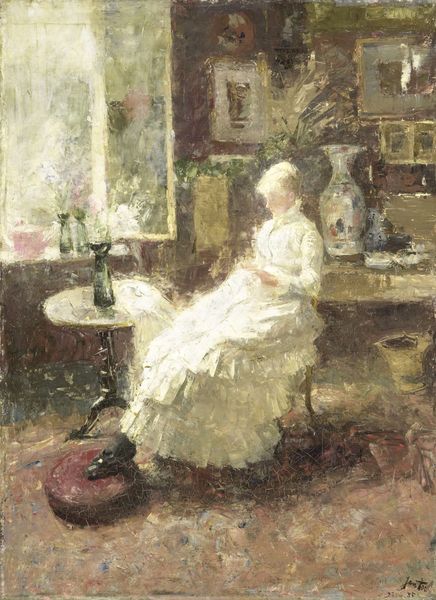
Copyright: Public domain
Editor: So, this is Isaac Israels' "In the Café," painted in 1905. It's an oil painting of a woman at a table. The impressionistic brushstrokes give it a very immediate, almost voyeuristic feel. What strikes you most about this piece? Curator: Immediately, I'm drawn to consider the role of women in public spaces during this period. Genre paintings like this provide valuable insights into the evolving social landscape and the changing status of women. Look at the cafe: it is presented as a stage for observing modern life. Editor: A stage? Could you elaborate on that? Curator: Certainly. Israels, like many Impressionists, was fascinated by the dynamics of modern urban life. Cafes, historically male spaces, became more accessible to women as they gained greater social freedom, which in turn shaped how society at large behaved. Who gets to be *seen* and under what conditions were key to the larger narrative. Does the woman's gaze suggest she is aware of being observed? Editor: That's an interesting point. She is looking down, rather detached, almost as though in her own world. Curator: Precisely! Consider the art nouveau influences visible here: how the floral elements are a nod to feminine sensibilities, yet juxtaposed with the reality of her limited agency within the urban landscape. Do you think that duality reinforces or subverts traditional gender roles? Editor: I hadn't thought of it that way, but now I see how the painting exists in that tension. I learned about the social impact on subjecthood and spatial ownership; fascinating! Curator: And I gained insights into appreciating the complexities of portraiture through your keen eye.
Comments
No comments
Be the first to comment and join the conversation on the ultimate creative platform.
